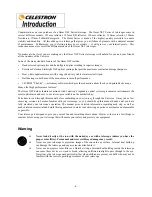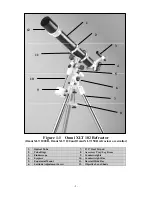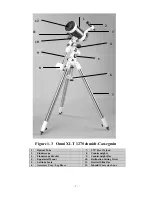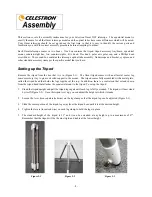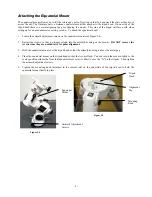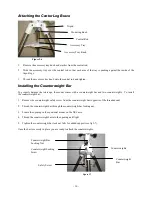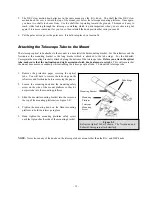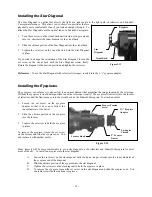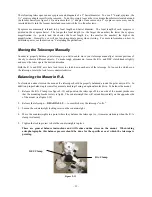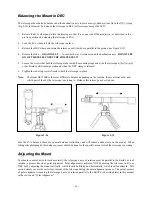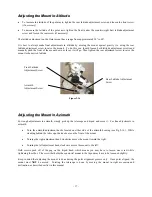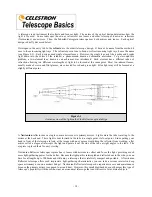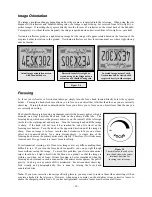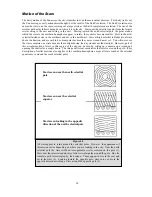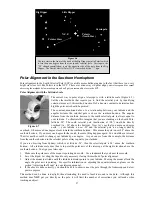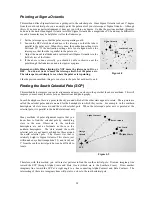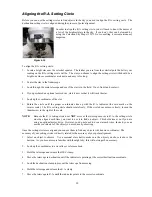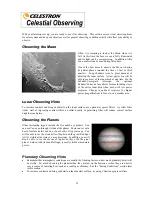
- 17 -
A
A
d
d
j
j
u
u
s
s
t
t
i
i
n
n
g
g
t
t
h
h
e
e
M
M
o
o
u
u
n
n
t
t
i
i
n
n
A
A
l
l
t
t
i
i
t
t
u
u
d
d
e
e
•
To increase the latitude of the polar axis, tighten the rear latitude adjustment screw and loosen the front screw
(if necessary).
•
To decrease the latitude of the polar axis, tighten the front (under the counterweight bar) latitude adjustment
screw and loosen the rear screw (if necessary).
The latitude adjustment on the Omni mount has a range from approximately 20° to 60°.
It is best to always make final adjustments in altitude by moving the mount against gravity (i.e. using the rear
latitude adjustment screw to raise the mount). To do this you should loosen both latitude adjustment screws and
manually push the front of the mount down as far as it will go. Then tighten the rear adjustment screw to raise the
mount to the desired latitude.
Figure 2-16
A
A
d
d
j
j
u
u
s
s
t
t
i
i
n
n
g
g
t
t
h
h
e
e
M
M
o
o
u
u
n
n
t
t
i
i
n
n
A
A
z
z
i
i
m
m
u
u
t
t
h
h
For rough adjustments in azimuth, simply pick up the telescope and tripod and move it. For fine adjustments in
azimuth:
•
Turn the azimuth adjustment knobs located on either side of the azimuth housing (see Fig 2-16). While
standing behind the telescope, the knobs are on the front of the mount.
•
Turning the right adjustment knob clockwise moves the mount toward the right.
•
Turning the left adjustment knob clockwise moves the mount to the left.
Both screws push off of the peg on the tripod head, which means you may have to loosen one screw while
tightening the other. The screw that holds the equatorial mount to the tripod may have to be loosened slightly.
Keep in mind that adjusting the mount is done during the polar alignment process only. Once polar aligned, the
mount must
NOT
be moved. Pointing the telescope is done by moving the mount in right ascension and
declination, as described earlier in this manual.
Rear Latitude Adjustment
Screw
Front Latitude
Adjustment Screw
Azimuth
Adjustment Screw


